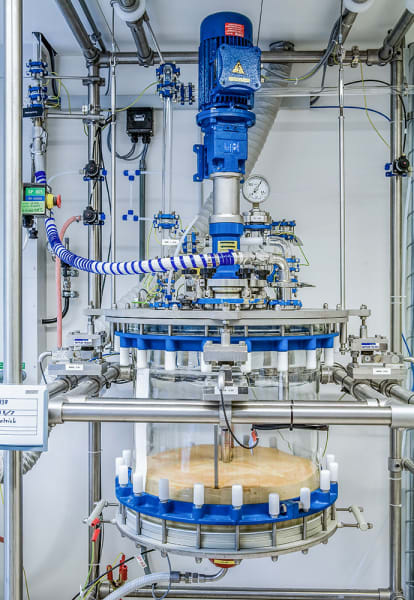Technical Features:
General features
- Glass filter vessel 10 – 300 liter
- -1.0 up to 0.5 bar
- -60 °C to 200 °C
- chemical inert materials: glass / PTFE / PFA / ETFE
- cGMP design / complies with FDA regulations
- ATEX / MRL
Standard issue features
- Coated cover plate
- Dry running mechanical seal
- Various mesh sizes, filter mesh 8 – 115 μm / support plate
- Lift for easy opening / discharge and cleaning / filter change
- Stainless steel scaffolding
Customizations for solid phase reactors
- Manually or motor driven stirrers
- Stirrer design in different shapes, custom according to specifications
- Free nozzle arrangement on cover plate
- Spray nozzles CIP for cleaning or solvent addition
- Inlet tubes in various shapes and designs
- Level switches for overflow protection or automation
- Liquid feeding batteries for solvents, reactants, others
- Load cell - weighing system
- Heating / cooling jacket
- Adaptation for high containment powder transfer systems
- Design materials: stainless steel 316L, Hastelloy® C22,
glass lined steel, PTFE, PFA – coated - Glass overhead, e.g. for drying
- Automation control system
- Connection interfaces










